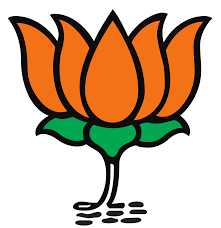NEW DELHI, June 5: The BJP losing its outright majority and now having to rely on allies to form a government may delay more far-reaching elements of economic and fiscal reforms like land and labour and impede progress on fiscal consolidation, global rating agencies said on Wednesday.
Fitch Ratings and Moody’s Ratings in separate notes spoke about the implication of Prime Minister Narendra Modi-led BJP losing its majority for the first time since 2014, winning 240 seats in the 543-seat Lok Sabha. BJP now plans to form a government with smaller parties in the National Democratic Alliance, which won another 53 seats, giving the alliance a 293-seat majority.
“It appears the BJP-led NDA is likely to form the next government, returning Prime Minister Modi for a third term, but with a weakened majority that could pose challenges for the more ambitious elements of the government’s reform agenda,” Fitch said.
As the BJP fell short of an outright majority and will need to rely more heavily on its coalition partners, “passing contentious reforms could prove more difficult, particularly around land and labour, which have recently been flagged as priorities by the BJP to boost India’s manufacturing competitiveness,” it said.
Moody’s said it expects policy continuity, especially with regards to budgetary emphasis on infrastructure spending and boosting domestic manufacturing, to support robust economic growth.
“However, the NDA’s relatively slim margin of victory, as well as the BJP’s loss of its outright majority in parliament, may delay more far-reaching economic and fiscal reforms that could impede progress on fiscal consolidation,” Moody’s said in a note.
Fitch too expected policy continuity to persist despite a slimmer majority. It expected the government to retain its focus on capex push, ease of doing business measures, and gradual fiscal consolidation.
“We expect India’s strong medium-term growth outlook to remain intact, underpinned by the government capex drive and improved corporate and bank balance sheets. But upsides to medium-term growth prospects are likely to be more modest if reforms prove more challenging to advance,” it added.
India’s fiscal outcomes will remain weaker than Baa-rated peers, even as the final budget for the fiscal year ending March 2025 (fiscal 2024-25) to be released in the next few weeks provides some indications of India’s fiscal policy over the course of the term of the incoming government through 2029, Moody’s said.
In fiscal 2023-24, India’s real GDP accelerated to 8.2 per cent from 7.0 per cent in the previous year, driven by gains in gross fixed capital formation as the government’s infrastructure programme gained further traction even as private consumption remained subdued.
“Our assessment of India’s economic strength incorporates real GDP growth of around 7 per cent over the three-year period between fiscal 2023-24 through 2025-26, while factoring potential upside over the medium-term resulting from improvements in productivity and potential growth on the back of traction on infrastructure development and digitalization,” Moody’s said.
The rating agency said although it projects India to grow faster than all other economies in the G20 through fiscal 2025-26, near-term economic momentum masks structural weaknesses that pose risks to long-term potential growth.
“High levels of youth unemployment across all sectors and weakness in productivity growth in the sovereign’s large agriculture sector continue to constrain its growth potential,” it said. “While we expect the incoming government to carry over its focus on fiscal consolidation, material improvements in its debt ratios and interest servicing have yet to materialize.”
Since reaching a trough in fiscal 2020-21, the Central Government’s deficit is likely to have narrowed for three consecutive years; if the planned deficit of around 5 per cent of GDP announced in the interim budget for fiscal 2024-25 is achieved, it would place the government’s goal of achieving a 4.5 per cent of GDP deficit by fiscal 2025-26 within reach.
“However, the pace of India’s fiscal consolidation post-pandemic has not outperformed other emerging markets in Asia-Pacific, and its fiscal and debt metrics remain weaker than Indonesia (Baa2 stable), the Philippines (Baa2 stable) and Thailand (Baa1 stable), as well as other Baa-rated peers globally.
“In addition, India’s fiscal metrics, whether aggregated at a central Government or general government level, would remain worse than before the pandemic, when India’s rating was higher at Baa2,” it added. (PTI)
Trending Now
E-Paper


